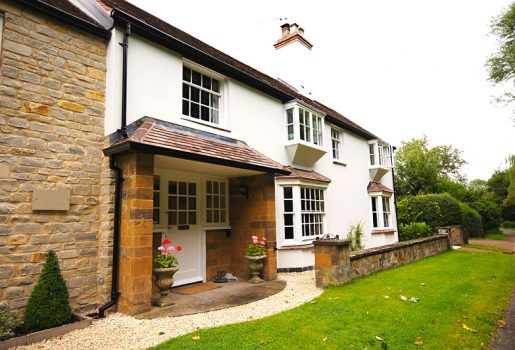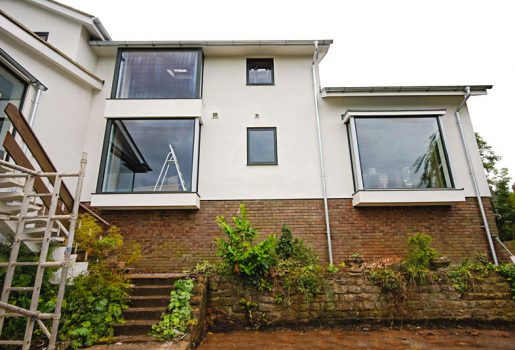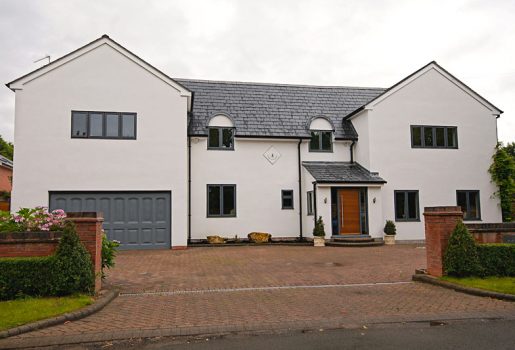House Rendering Northampton
At Gaffney & Guinan, we deliver house rendering services across Northampton.
Anti-crack rendering is one of the latest, most significant advancements in construction. Our installers at Gaffney & Guinan have a wealth of experience rendering homes and various properties, including cutting-edge buildings and old, historic structures.
The quality, durability and appearance of today’s rendered finishes are all improving rapidly. For our render solutions, our installers use reinforcement meshes and polymer-based basecoats.
Our rendered treatments are suitable for a range of building styles. Additionally, we offer a variety of decorative finishes for your render, from vivid colours to pastel tones.
Get in touch if you reside in Northampton or the surrounding areas and wish to improve the quality of your property. Discover how our rendering services can help you.

Benefits of our Northampton House Rendering Services
- Enhances your property’s structural integrity – By rendering the exterior of your house, you can not only safeguard its layers but also even out uneven brickwork.
- Prolongs the lifespan of your house’s materials – Typically, house rendering can last up to 20-30 years.
- Enhances the appearance of your property – Rendering your home can give it a more contemporary look, and you have the option to customize the render to suit your preferences.
- Provides mild insulation – External house rendering can minimize heat transfer through walls, enabling your property to retain heat, and can reduce heat loss by nearly 30%.
- A variety of styles to choose from, with a broad selection of hues and textures.
- Helps prevent dampness – Although rendering cannot eradicate dampness, it can effectively prevent its spread through walls. Cement and sand renders are the most effective at combating dampness.
Types of House Rendering
We can provide you with the right render to suit your preference. The types of render we provide include:
- Cement renders – The most used type of render is cement render. The cement render is first prepared and applied in coats. Then, we apply a final, thin layer to ensure a good finish and that the render is ready for painting.
- Polymer renders – Our professionals pre-mix the materials we use for polymer renderings. Lime and white cement are the polymer rendering elements that we use. Then, we add plastic components to the mixture to increase the render’s toughness and crack resistance.
- Acrylic renders – The underlying coat is sealed with acrylic renderings, which also enhance the coat’s look. Acrylic renders give your property a beautiful, smooth finish.


- Monocouche renders – Monocouche is a French word that translates to “single layer” or “bed”. Monocouche renderings are a relatively new addition to the rendering industry. The single-coat render is pre-mixed with water and can be applied by hand or machine. White cement is typically used, but we normally colour it ahead of time in various shades. As Monocouche renders only require one coat, they are easier to apply than other renders.
- Lime renders – Lime renderings are becoming more popular these days. These types of renders are more difficult to install than other renders. As a result, lime renders are more suited for renovation projects.
- Insulating Renders – Insulating render can be used to renovate a home. This type of render is beneficial when your outside walls are decaying or not adequately insulated. Is the exterior wall of your house leaking or vulnerable to water damage? If so, insulation render can be of assistance.
Which type of render should I choose?
The type of house rendering that is most suitable for your property depends on its structure. For instance, if you reside in an old house, a lime render may be the best choice since any movement in an old building can lead to cracks in cement rendering. Our team of specialists at Gaffney & Guinan will help you make the best decision for your property.
Will you need planning permission to apply external render?
Determining whether or not you can apply external render to your property is contingent on various factors, such as:
- Type of building – If your property is a listed building, you will need planning permission to render your home since listed buildings are of historical and architectural significance.
- Location – If your property is situated in a National Park, Conservation or Area of Outstanding Natural Beauty, you’ll need to seek planning permission before applying external render.
If your property is located outside of these areas, you are in luck! You won’t require planning permission to render your home. However, you should ensure that the materials used are comparable to those employed in the original construction. We recommend contacting the Gaffney & Guinan team, who will evaluate your case on an individual basis and recommend the best solution.
Frequently Asked Questions:
Can I render the exterior of my house myself? – Achieving a smooth render finish requires the skills and experience of a professional team. If you are not an expert, rendering your property may result in an unsightly and uneven appearance.
Does rendering increase the value of my property? – Yes, rendering can boost your property’s value by enhancing its appearance and providing an added protective layer to preserve the building’s structural materials. These improvements will likely make your property more attractive to potential buyers.
Will rendering my house prevent dampness? – Although rendering will not stop dampness from entering your property from its source, it can prevent it from penetrating through the render layer.
Get in Touch
Gaffney & Guinan is a prominent provider of exceptional external rendering services, catering to clients in Northampton and the surrounding areas. Our commitment to delivering seamless client experiences has earned us a sterling reputation in the industry.
We welcome you to get in touch with our knowledgeable surveyors today to receive a comprehensive quote for your project. Contact our surveyors today to receive a quote.


